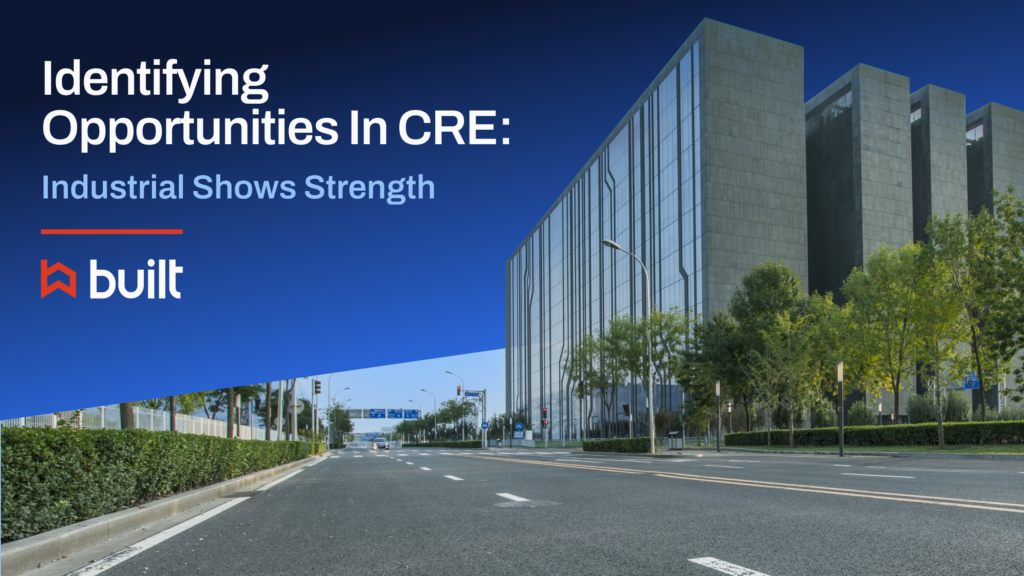
Turning Turbulence into Transformation: CRE Lending Q&A with Jim Fraser

The market turbulence experienced in 2020 will undoubtedly shape 2021’s real estate market, particularly for lenders with commercial real estate (“CRE”) construction loans in their portfolios. Despite nationwide uncertainty, overall construction loans by U.S. banks totaled $385 billion in 2020. Looking to the future, construction lenders should evaluate where there is opportunity—Jim Fraser shares his thoughts on CRE construction exposure, fallout from the pandemic, and what’s to come for CRE lending.
- Which banks face the greatest risk as a result of the pandemic?
Banks with large portfolios consisting of stabilized hospitality, entertainment and retail properties on balance sheet, have the most risk as delays in recovery playout this year. A regulated lender with a large balance, term loan financing a hotel in Las Vegas has likely taken steps to defer or forbear in accordance with the CARES Act. That loan has certainly experienced debt service coverage stress in 2020. Construction loans that are currently in development and haven’t yet reached completion or opened for occupancy may have a “timing advantage” if economic activities continue to improve in 2021. Let’s hope the recovery progresses quickly this spring. - What major ripple effects will CRE lenders see because of the pandemic?
Banks will require increased loan loss provisions as a result of identified weakness at the individual credit level. Risk rating downgrades of underperforming or special mention credits will impact asset quality scores and attract management, board, and regulatory scrutiny. As these loans are stressed and examined in comparison to prior periods, 2020 is going to look significantly worse than 2019. And, since future credit performance remains less predictable, regulated lenders will likely add to Current Expected Credit Losses (CECL) reserves. - What steps can lenders take proactively to anticipate these ripple effects?
Portfolio Managers and the Special Assets Groups in most banks have an old saying, ”Your first loss is your best loss,” meaning that loss severities taken early in the liquidation process are usually the lowest. Construction loans impacted by the pandemic or experiencing other performance issues may be targeted for sale by a bank to improve overall portfolio asset quality scores or minimize additional loss provisioning. But, selling a construction loan during the construction process is difficult to price. Buyer and seller need to have a common and complete understanding of the construction budget, performance of general contractors, subcontractors, remaining costs to complete and project schedules. Construction loans managed on Built allow for incredibly detailed analysis of the project’s life cycle and line item details of the construction progress. Having transparent access to this information improves price discovery and may influence loan sale proceeds and discounts. - What do you see as the biggest risk facing CRE lenders currently? What about in 6 months?
In larger MSA’s and as markets change, there’s likely to be some repurposing of existing buildings. Multifamily new construction might be a stronger and more resilient market, but converting an office building into an apartment complex might become a faster, less expensive, repurposing option for some owners/operators. Six months from now, as the pandemic issues subside, markets will recover at different speeds and for different reasons. For example, Boise and Manhattan are driven by a wide range of market variables, including tax policy, local entitlement postures, interstate migration, and employment conditions. We’ll see all of these factors influencing commercial real estate construction patterns in 2021. - What questions would you ask a lender with CRE construction loans right now?
A high percentage of CMBS foreclosures are hotel or retail—less than approximately 5% of CMBS foreclosures are multifamily. So, how does your construction portfolio stack up against those statistics? If you’re in construction, there is a similar measurement in terms of your mix of projects, but you also need to layer on delivery—when is the project expected to come to market? There will be decreased risk for these projects as time goes on and the market gets, ideally, more stable. - How can Built help curb exposure for the CRE construction side of their portfolios?
Limiting exposures by loan type or purpose starts with the lender’s risk appetite and concentration policies usually established by the Board. The only way to truly curb exposure is by not making a lending commitment in the first place. Once a construction loan commitment is made, lenders need to balance two competing issues. On one hand, the lender shares a common interest with their borrower to ensure that the project is completed on time and on budget. On the other hand, lenders must diligently monitor and candidly consider facts presented as the project proceeds. Lenders can’t kick the can down the road on a problem loan or avoid accurate reporting on identified weaknesses. Built’s robust reporting and monitoring capabilities help on both sides of this issue in order to surveil and surface construction loan performance. - In addition to risk mitigation, which Built features are most valuable as CRE construction lenders brace for impact?
Built provides construction completion performance metrics. Construction loans can’t be delinquent because the interest reserves typically cover interest accruals. Lenders need to find other project characteristics to monitor on a regular basis and to validate the collateral while making draws and disbursements. Built’s performance monitoring, which includes everything from title searches and lien monitoring to dormancy monitoring and other reporting capabilities, is captured in one dashboard on Built. The aggregated data is available at the lender’s fingertips, in real time, rather than employees staring at spreadsheets seeking to find key risk indicators.
Let’s start a conversation about how Built can help you navigate the changing market conditions for your CRE construction projects—reach out to our team today.
Related Posts


Built Names Chris DeVito as Vice President of Product







